
Taj time!
We had our first opportunity to venture into the north of India with our weekend trip to Delhi and Agra. I was a bit nervous about this trip, because Delhi doesn’t quite have Mumbai’s safety reputation, but luckily we were able to make a solid safety net of sticking together and hiring a trusted driver and guide. People in Delhi are apparently more willing to do anything to survive, and it was certainly eye-opening when child street hawkers were practically climbing the sides of our van to ask for money. It’s hard to know what to do to help in these kinds of situations when money might not even go to the children at all, but I hope our offerings of food made some difference. I was also told that Delhi would be very cold…but I think that’s a Mumbaikar’s version of ‘cold’!


Delhi is definitely less crowded than Mumbai. It blends into the countryside more gradually – even the men peeing on the roadsides have plenty of space! The countryside around Delhi and Agra reminds me of a mix between Greece and China: dusty green scrub, pastel colours in the heat, occasional apartment blocks along the highway, and (this explains it) cypress trees. Cypress trees are meant to symbolise eternity here, which makes it all the more odd that their tops are often cut off. But I guess eternity can be rectangular too. I love the hand-painted aesthetic here too, with all the bright colours on van signs and number-plates. And you can look directly at the sun here, the smog’s so thick! It’s very beautiful but very odd.


After a couple of days enjoying the history and rich architecture of the Indoarabic Qutb Minar (apparently it was made by a Muslim ruler, Mr Aibak, who rose all the way up the ranks to being a sultan) and the impressively huge Red Fort of Agra, we reached the jewel in the crown of our trip: the Taj Mahal. Let me tell you, this monument is beautiful in pictures, but it’s a whole nother story in person. It honestly shines in pure white marble. Its beauty echoes all the way down towards you thanks to the reflective water pools, and I didn’t even realise there were so many decorative motifs and writings inlaid in it with precious stones. When you get up close, it’s surprisingly huge, and standing on the cool marble in bare feet makes you feel so calm and connected to this enormous tomb that has stood vigil on the banks of the river for hundreds of years.




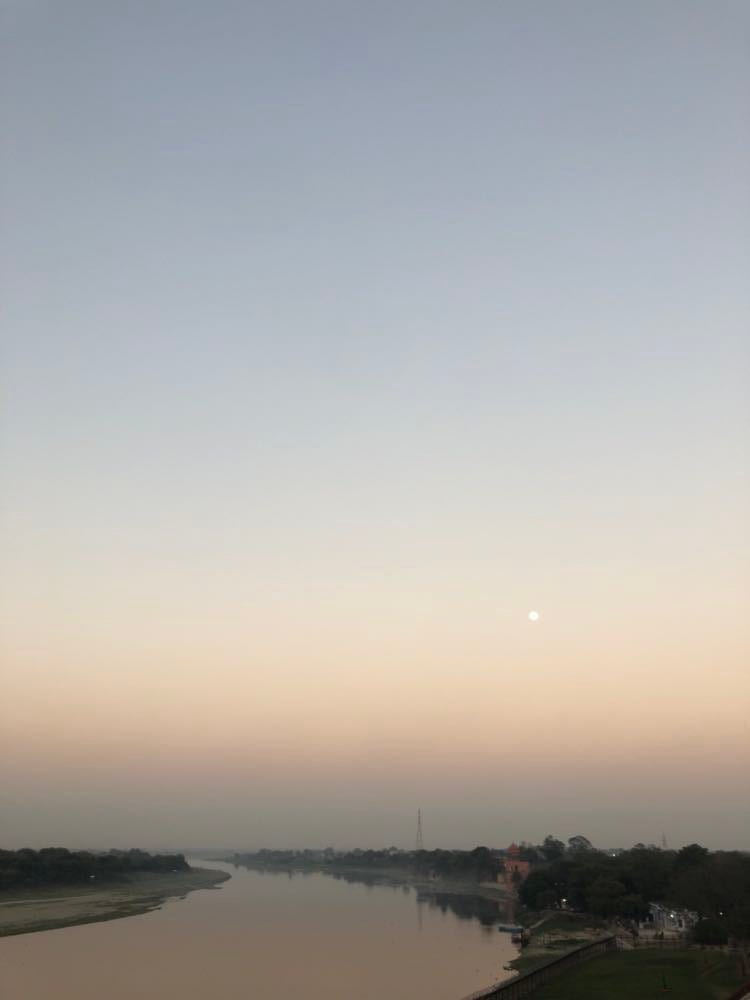




We also visited the Baby Taj in Delhi, which should probably rightly be called the Tiny Grandmother Taj, because it was the first white marble palace built in Agra, and sits within a carefully planned garden to form an escape from the outside world. This one would have been so cool to visit by riverboat once upon a time. I also found it interesting that the four streams of water leading towards it represent the four most important liquids: water, milk, honey and wine.
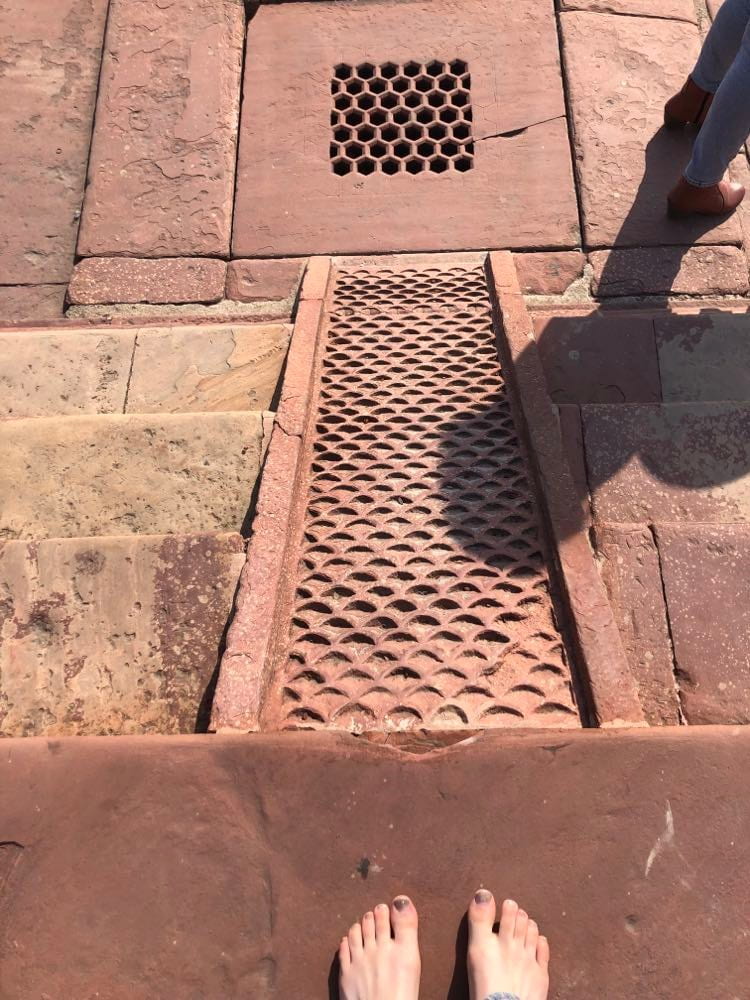
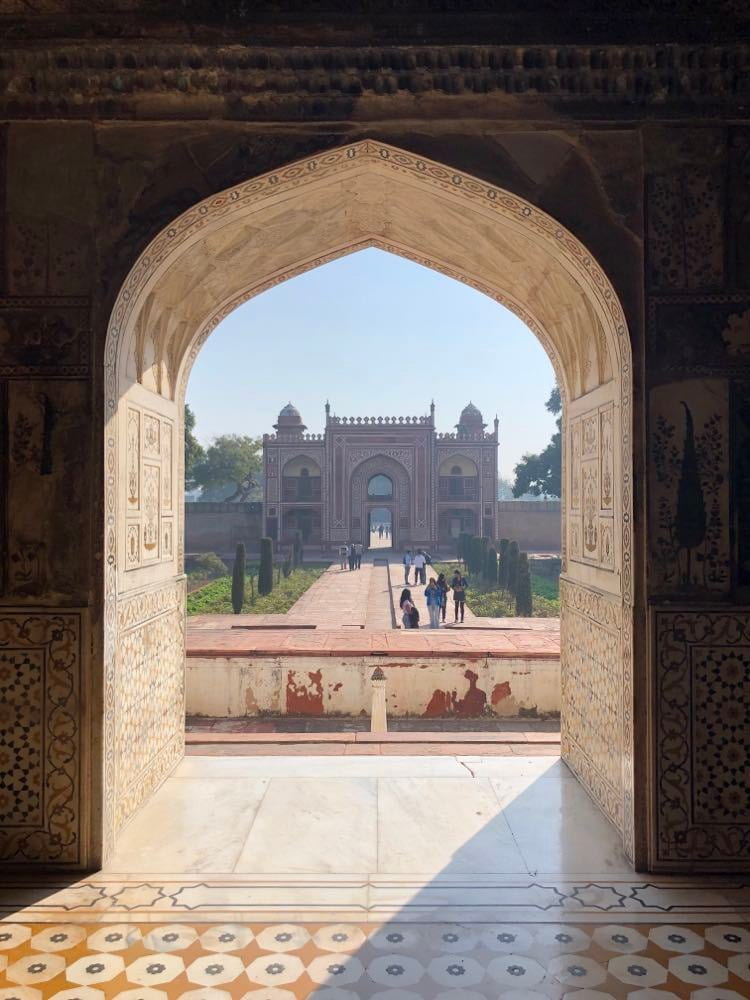
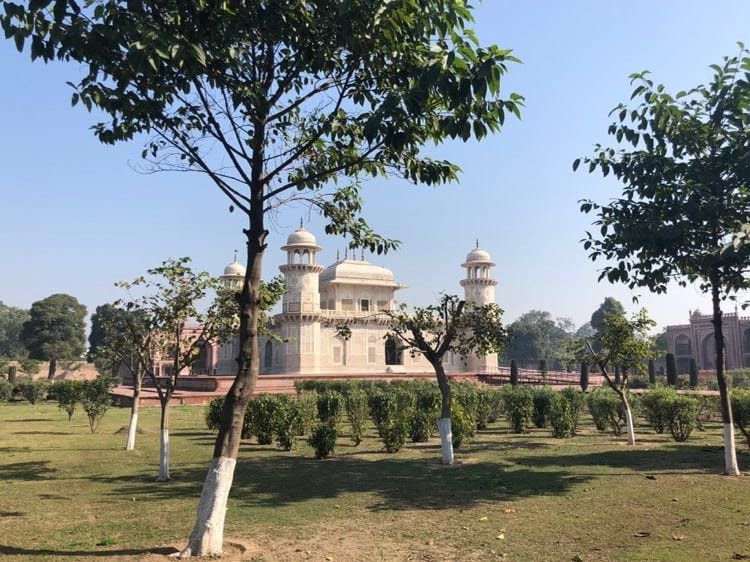
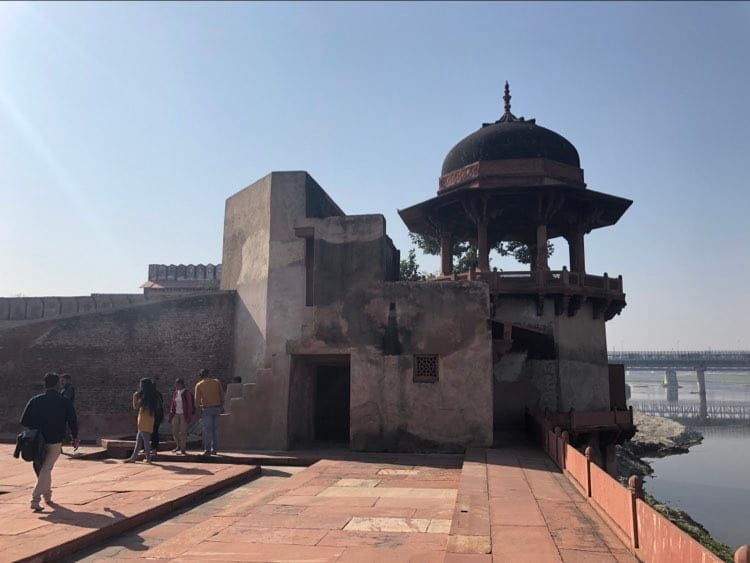
To English or not to English
I’ve been thinking a lot about the relationship India has with the English language. It’s not really a ‘mother tongue’ language here, and yet it’s used pretty much exclusively in college exams and professional industries. I’ve been told that it’s important for kids to learn English if they want to get a good job, but feels unfair that their mother tongues aren’t viewed as ‘good enough’. Additionally, having to learn English to work in a white-collar industry, or overseas, means it’s very much a separation of opportunity for those who don’t have as much chance to learn it.
Coming from New Zealand where we are trying so hard to reintegrate the beautiful Te Reo Māori, it was my assumption that after winning independence, Indian people would want to kick out all traces of English colonisation. However, I guess that was coloured by my own lens, because from what I’ve seen, Mumbaikars are totally fine with and actually seem to prefer calling the city Bombay. Maybe they don’t care about little things now that they have independence, or maybe they’re just used to it.
But having to study and work in your second or third language is no easy task, and probably feeds into the ‘culture of copy-paste’ I’m seeing with the girls I work with (they tend to copy out homework questions and answers word-for-word, whereas we’ve had it drilled into us to write in our own words and come up with our own opinions since day one). It seems to me that there’s also a lack of a pipeline for learning English, as many younger-age schools use Hindi or Marathi as their language of instruction, and then the students suddenly have to do everything in English when they reach college. Most higher-up people here speak English, but they speak it as a second language and often imperfectly, so often the learning-English resources are imperfect too. Quite naturally, this means that the English used in India often has errors or inconsistencies in writing that through my eyes look incorrect, and yet it is a thriving language used by millions in the country to communicate successfully with each other. I wonder when you would consider something like the English used in India to be an evolved dialect rather than an incorrect approximation?
Beyond the slums

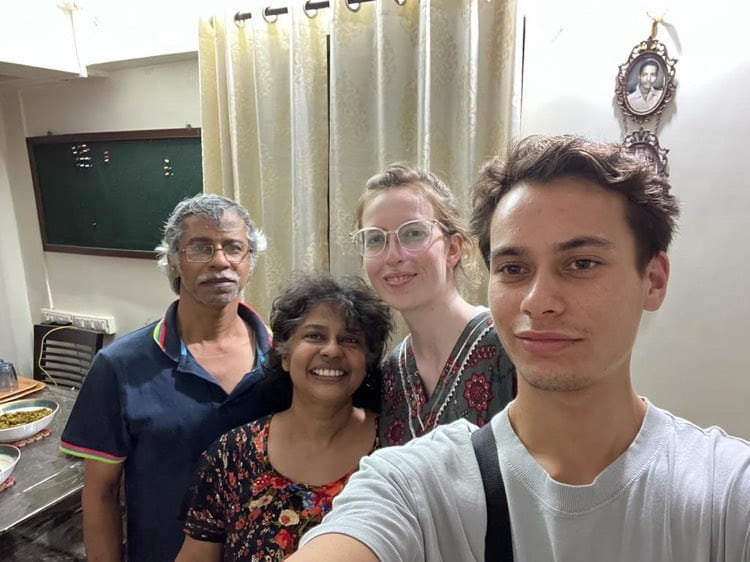
I had the opportunity to share in a dinner in an ordinary Mumbai household through a family friend, and it was so lovely trying some delicious food and chatting about some of the differences between India and New Zealand. I’ve admired India for its hustle culture before, but our host explained that the flip side of that is that there’s not a lot of awareness around mental health. Similarly, I’ve noticed that India is definitely way more gendered than NZ, with separate train carriages, different sports expectations, and segregated pat-downs at airports and festivals. This comes out of a big push for women’s rights over the last 20 years, and in many cases seems necessary for the culture it has grown out of, but still, it must be hard to exist outside the gender/sex binary here.
It was also interesting to learn that many middle-class and wealthy households have maids here – another holdover from colonisation, I suppose. Richer and poorer areas coexist quite closely to one another, so common for workers and maids to come out of the slums to work for richer families. Unfortunately the pay isn’t great, and probably won’t be while there are so many people wanting jobs. Even for middle-class jobs, pay is usually given per fortnight or month – there’s no hourly rate – which means bosses can take advantage in asking workers to stay long hours without paying them overtime, and there are ten people ready to take your place if you don’t like the conditions.
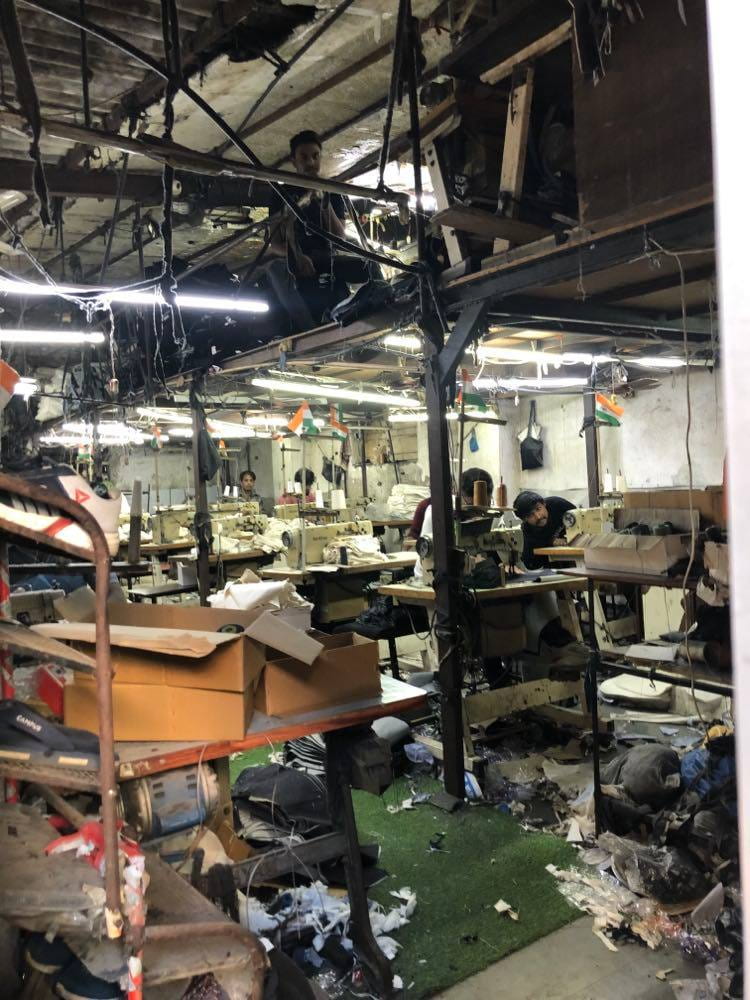
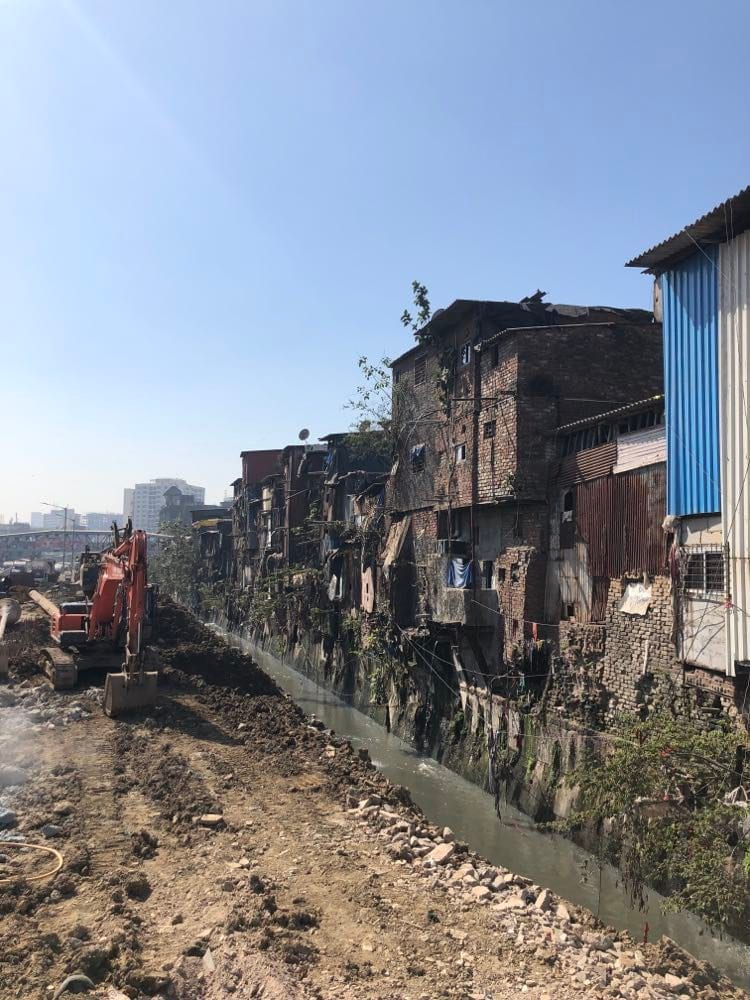
The epitome of this side of Mumbai’s working life was seen when we visited Dharavi, Asia’s biggest slum. People live, cook, sleep and work in such tiny spaces, and everybody is so enterprising. The slum has tiny warren-like streets and dwellings precariously balanced three or four or five levels high. It’s quite beautifully layered, and feels like diving into a whole new world. There are temples, schools, sweetshops and churches just like anywhere, and was surprisingly industrial, too. It was quite shocking for me to walk through the alleys lined with rubbish, thick enough that it was impossible not to step on, and learn that some residents collect the plastic waste and sort it by hand (or by mouth, as they sometimes bite the plastic to check it) for recycling. I felt a bit like I was living in a dystopian novel. This was the half of the cycle of waste and production in the city that rich people don’t ever think about – but at the same time, Dharavi is the centre of the creation of so many beautiful crafts! We saw suits and leatherwork, and a jeans factory, all of a surprising quality that was at odds with the surroundings.
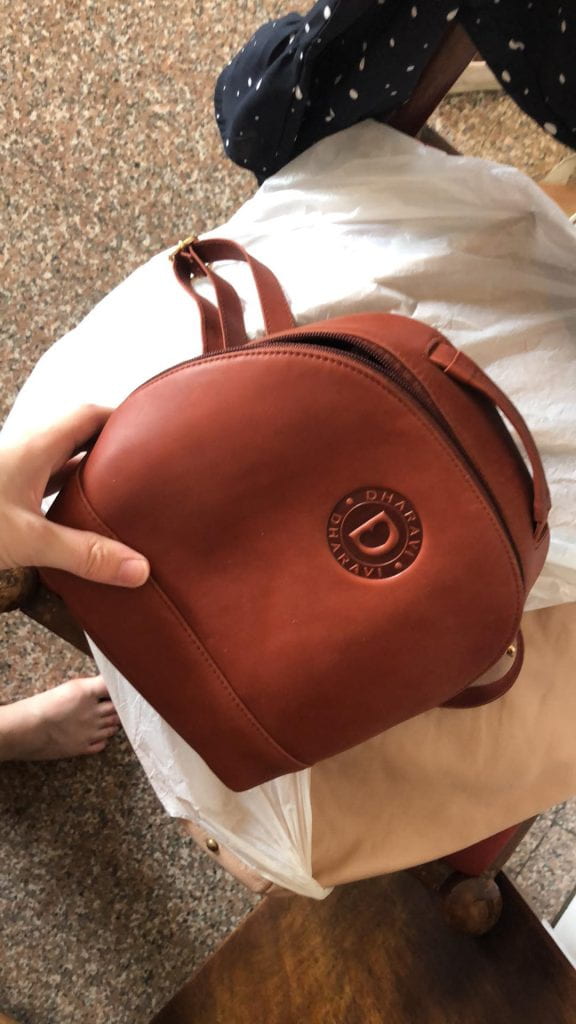

I’ve been thinking about the fable that I read about in Mao’s Last Dancer of the frog in the well, who can never see beyond the well except for one small circle of sky, and so never misses the outside world. There is so much life and energy and curiosity here, and I’d love to know what the residents feel about it – do they love Dharavi, their thriving hub of industrialism? Or do they see it only as a stepping block to wishing for something more?